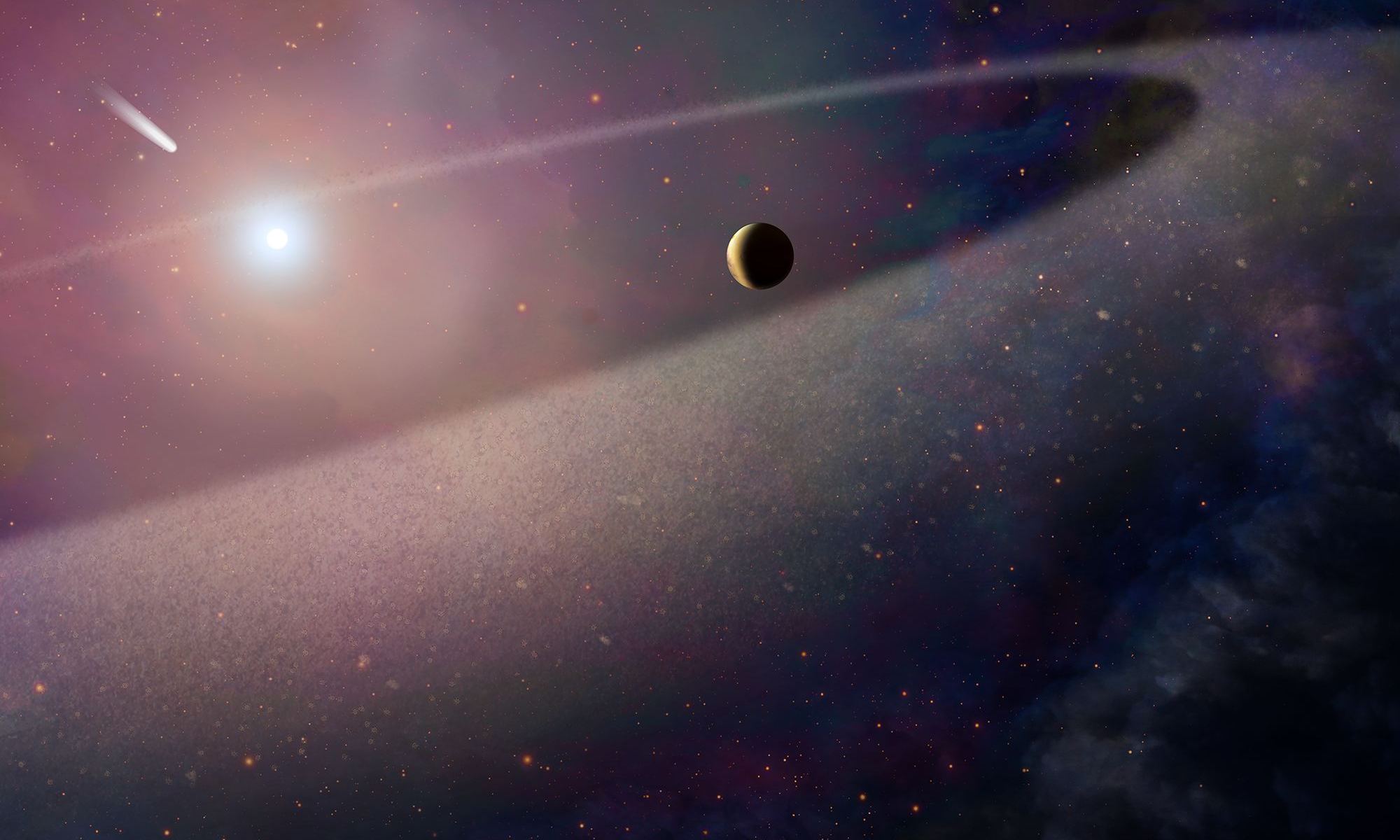As the successor to the venerable Hubble Space Telescope, one of the main duties of the James Webb Space Telescope has been to take deep-field images of iconic cosmic objects and structures. The JWST’s next-generation instruments and improved resolution provide breathtakingly detailed images, allowing astronomers to learn more about the cosmos and the laws that govern it. The latest JWST deep-field is of a region of space known as Abell 7244 – aka. Pandora’s Cluster – where three galaxy clusters are in the process of coming together to form a megacluster.

The image was taken as part of the Ultradeep NIRSpec and NIRCam ObserVations before the Epoch of Reionization (UNCOVER) program. The UNCOVER team relies on data obtained by Webb’s Near-Infrared Camera (NIRCam) to observe Pandora’s Cluster for about 30 hours. Follow-up observations are then made with the Near-Infrared Spectrograph (NIRSpec) to provide precise distance measurements and other detailed information about the lensed galaxies’ compositions. The program aims to study early galaxies to gain new insights into galaxy formation and evolution in the early Universe.

UNCOVER is a JWST Cycle 1 public Treasury survey that will obtain deep NIRCam multiband imaging and ultradeep low-resolution NIRSpec/PRISM spectroscopy of the Frontier Field Abell 2744. Credit: NASA/ESA/CSA/UNCOVER
Combining Webb’s powerful infrared instruments with a broad mosaic view of the clusters’ lensing effect, the UNCOVER team aimed to achieve a balance of depth and breadth that showcases the power of the JWST and the era of astronomy it is ushering in. The resulting image of Pandora’s Cluster contains an estimated 50,000 sources of near-infrared light and shows the powerful gravitational lens created by the combined mass of the clusters. This phenomenon occurs when massive objects (as predicted by General Relativity) alter the curvature of spacetime, causing light from more distant objects to become warped and amplified.
In this case, this lensing technique is being used by astronomers to view galaxies that existed when the Universe was young. These earliest (“First Light”) galaxies formed during the Cosmic Dark Ages, a period that began ca. 330,000 years after the Big Bang that is not observable in visible light (hence the name). These galaxies led to the Era of Reionization, which ended the Dark Ages about 1 billion years ago and led to the Universe becoming transparent. Said astronomer Rachel Bezanson, an astrophysicist at the University of Pittsburg and the co-principal investigator on the UNCOVER program:
“The ancient myth of Pandora is about human curiosity and discoveries that delineate the past from the future, which I think is a fitting connection to the new realms of the universe Webb is opening up, including this deep-field image of Pandora’s Cluster. When the images of Pandora’s Cluster first came in from Webb, we were honestly a little star struck.”
“There was so much detail in the foreground cluster and so many distant lensed galaxies, I found myself getting lost in the image. Webb exceeded our expectations.” The new view of Pandora’s Cluster stitches four Webb snapshots together into one panoramic image, displaying roughly 50,000 sources of near-infrared light.”

Close-up of the gravitational lens in the lower-right of the Webb image, showing distant galaxies. Credits: NASA/ESA/CSA/I. Labbe/R. Bezanson/Alyssa Pagan (STScI)
The only previous observations of Pandora’s Cluster were conducted by Hubble, which studied the core region of the cluster in 2014. As part of the Frontier Fields program, astronomers used the core as a gravitational lens to observe a faint galaxy roughly 13 billion light-years distant. In this latest Webb image, there’s a previously-unseen lensing core to the lower right that reveals hundreds of distant lensed galaxies (visible as faint arced lines). Said astronomer and co-principal investigator Ivo Labbe of the Swinburne University of Technology:
“Pandora’s Cluster, as imaged by Webb, shows us a stronger, wider, deeper, better lens than we have ever seen before. My first reaction to the image was that it was so beautiful, it looked like a galaxy formation simulation. We had to remind ourselves that this was real data, and we are working in a new era of astronomy now.”
The UNCOVER team expects to observe Pandora’s Cluster with NIRSpec in the summer of 2023. In the meantime, all of the NIRCam data has been publicly released so that other astronomers can use Webb’s datasets for their own research. “We are committed to helping the astronomy community make the best use of the fantastic resource we have in Webb,” said co-investigator Gabriel Brammer of the Niels Bohr Institute’s Cosmic Dawn Center at the University of Copenhagen. “This is just the beginning of all the amazing Webb science to come.”
Source: universetoday.com








